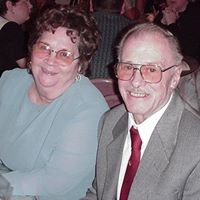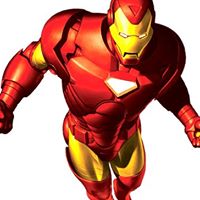Francis J Burns
age ~85
from Bensalem, PA
- Also known as:
-
- Francis H Burns
- Frank H Burns
- Francix H Buns
Francis Burns Phones & Addresses
- Bensalem, PA
- Friendsville, PA
- Philadelphia, PA
Lawyers & Attorneys

Francis Burns, Philadelphia PA - Lawyer
view sourceAddress:
190 N Independence Mall W, Philadelphia, PA 19106
Specialties:
Health Care Law
Insurance Bad Faith
Insurance Bad Faith
Jurisdiction:
Pennsylvania
Wikipedia References

Francis Burns (Footballer)
Us Patents
-
End Point Detection And Control Of Laser Induced Dry Chemical Etching
view source -
US Patent:46875395, Aug 18, 1987
-
Filed:Oct 29, 1986
-
Appl. No.:6/924519
-
Inventors:Francis C. Burns - Endicott NY
Russell W. Dreyfus - Mt. Kisco NY
John R. Susko - Owego NY -
Assignee:International Business Machines Corp. - Armonk NY
-
International Classification:C23F 102
B44C 122
C03C 1500
C03C 2506 -
US Classification:156626
-
Abstract:An end point detection technique indicates when a pulsed excimer laser, operating on a chromium clad copper substrate in the presence of chlorine gas, has etched through the chromium layer. The excimer laser vaporizes successive layers of the chromium chloride reaction product, which form on the region being etched, until, when all of the chromium has been removed from the region, a copper chloride reaction product layer forms on the region and is vaporized. A dye laser directs a probe beam into a zone spaced above the region being etched and is pulsed about 12 microseconds after each pulse of the excimer laser to allow time for the vaporized reaction products to reach the zone. The probe beam has a first wavelength of 433. 3 nm. which induces the vaporized copper chloride in the zone to fluoresce at a second wavelength of 441. 2 nm. A narrow band photodetector detects the fluoresced 441. 2 nm.
-
Ablatively Photodecomposable Compositions
view source -
US Patent:59027126, May 11, 1999
-
Filed:Jan 14, 1997
-
Appl. No.:8/783048
-
Inventors:Francis Charles Burns - Apalachin NY
William Weathers Fleming - Virginia Beach VA
Victor Yee-Way Lee - San Jose CA
Randy William Snyder - Vestal NY -
Assignee:International Business Machines Corporation - Armonk NY
-
International Classification:G03C1/805;1/76
-
US Classification:430269
-
Abstract:The present invention provides an ablatively photodecomposable polymer having a photoabsorber bound to the polymer (the "ablatively photodecomposable polymer") which does not phase separate, nor does it crystallize. The ablatively photodecomposable polymer provides even ablation, high resolution and in preferred embodiments, can withstand potassium permanganate etchant and ferric chloride etchant. The ablatively photodecomposable polymer is strippable, although it can remain on the substrate if desired. The ablatively photodecomposable polymer comprises a polymer to which a photoabsorber is bound, either covalently or ionically. The present invention is also directed to a process for forming a metal pattern on a substrate employing the ablatively photodecomposable polymer.
-
Flexible Supporting Cable For An Electronic Device And Method Of Making Same
view source -
US Patent:49068032, Mar 6, 1990
-
Filed:Nov 8, 1988
-
Appl. No.:7/268449
-
Inventors:Stanley M. Albrechta - Binghamton NY
Francis C. Burns - Endicott NY
Gary R. Carden - Endwell NY
William T. Chen - Endicott NY
Andrew R. Gresko - Binghamton NY
John J. Kaufman - Windsor NY
Eugene P. Skarvinko - Binghamton NY
Nadia Tonsi - Endicott NY -
Assignee:International Business Machines Corporation - Armonk NY
-
International Classification:H05K 100
-
US Classification:174254
-
Abstract:A flexible supporting cable for an electronic device which includes a steel foil substrate, a layer of polymer on portions of the substrate, circuit pads on the polymer layer having both the bottom and top surfaces of the pads exposed; circuit lines extending from the top surface of the pads, a window free from steel beneath a portion of the circuit lines, and a second, smaller window free from both steel and the polymer beneath a portion of the circuit lines. Methods are provided for fabricating these flexible supporting cables.
-
Cone Electrical Contact
view source -
US Patent:51182998, Jun 2, 1992
-
Filed:May 7, 1990
-
Appl. No.:7/520335
-
Inventors:Francis C. Burns - Apalachin NY
John J. Kaufman - Windsor NY
David E. King - Endicott NY
Alan D. Knight - Newark Valley NY -
Assignee:International Business Machines Corporation - Armonk NY
-
International Classification:H01R 900
-
US Classification:439 74
-
Abstract:An electrical interconnection, which includes a method for fabricating the device, is disclosed. The interconnection comprises two contact surfaces, on at least one of which is disposed at least one conical projection in predetermined dimension and location. Rather than being permanently cojoined, the contact surfaces are attachable and detachable when desired. The individual conical projections are comprised of an ablative material, and at least some of the conical projections include a surface which is substantially comprised of material in a thickness capable of making ohmic contact, either by wiping with an intermeshing like structure or by contacting a substantially flat contact pad. An interconnection, in this invention, is the combination of at least one contact having individual conical projections and another contact, optionally having individual conical projections. The conical projections are formed by laser.
-
Ablatively Photodecomposable Compositions
view source -
US Patent:59198680, Jul 6, 1999
-
Filed:Jul 22, 1997
-
Appl. No.:8/898285
-
Inventors:Francis Charles Burns - Apalachin NY
William Weathers Fleming - Virginia Beach VA
Victor Yee-Way Lee - San Jose CA -
Assignee:International Business Machines Corporation - Armonk NY
-
International Classification:C08F 0830
C08F 0838
C08F12010 -
US Classification:5253304
-
Abstract:The present invention provides an ablatively photodecomposable polymer having a photoabsorber bound to the polymer (the "ablatively photodecomposable polymer") which does not phase separate, nor does it crystallize. The ablatively photodecomposable polymer provides even ablation, high resolution and in preferred embodiments, can withstand potassium permanganate etchant and ferric chloride etchant. The ablatively photodecomposable polymer is strippable, although it can remain on the substrate if desired. The ablatively photodecomposable polymer comprises a polymer to which a photoabsorber is bound, either covalently or ionically. The present invention is also directed to a process for forming a metal pattern on a substrate employing the ablatively photodecomposable polymer.
-
Ablatively Photodecomposable Compositions
view source -
US Patent:61564451, Dec 5, 2000
-
Filed:Feb 24, 1998
-
Appl. No.:9/028371
-
Inventors:Francis Charles Burns - Apalachin NY
William Weathers Fleming - Virginia Beach VA
Victor Yee-Way Lee - San Jose CA
Randy William Snyder - Vestal NY -
Assignee:International Business Machines Corporation - Armonk NY
-
International Classification:B32B 2930
B32B 1508
B32B 1800
H01L 2912 -
US Classification:428620
-
Abstract:The present invention provides an ablatively photodecomposable polymer having a photoabsorber bound to the polymer (the "ablatively photodecomposable polymer") which does not phase separate, nor does it crystallize. The ablatively photodecomposable polymer provides even ablation, high resolution and in preferred embodiments, can withstand potassium permanganate etchant and ferric chloride etchant. The ablatively photodecomposable polymer is strippable, although it can remain on the substrate if desired. The ablatively photodecomposable polymer comprises a polymer to which a photoabsorber is bound, either covalently or ionically. The present invention is also directed to a process for forming a metal pattern on a substrate employing the ablatively photodecomposable polymer.
-
Ablatively Photodecomposable Compositions
view source -
US Patent:57055700, Jan 6, 1998
-
Filed:Jun 7, 1995
-
Appl. No.:8/476760
-
Inventors:Francis Charles Burns - Apalachin NY
William Weathers Fleming - Virginia Beach VA
Victor Yee-Way Lee - San Jose CA
Randy William Snyder - Vestal NY -
Assignee:International Business Machines Corporation - Armonk NY
-
International Classification:C08F22002
C08F22600
G03F 7039 -
US Classification:5253299
-
Abstract:The present invention provides an ablatively photodecomposable polymer having a photoabsorber bound to the polymer (the "ablatively photodecomposable polymer") which does not phase separate, nor does it crystallize. The ablatively photodecomposable polymer provides even ablation, high resolution and in preferred embodiments, can withstand potassium permanganate etchant and ferric chloride etchant. The ablatively photodecomposable polymer is strippable, although it can remain on the substrate if desired. The ablatively photodecomposable polymer comprises a polymer to which a photoabsorber is bound, either covalently or ionically. The present invention is also directed to a process for forming a metal pattern on a substrate employing the ablatively photodecomposable polymer.
-
Method Of Making Cone Electrical Contact
view source -
US Patent:51724731, Dec 22, 1992
-
Filed:Sep 25, 1991
-
Appl. No.:7/765299
-
Inventors:Francis C. Burns - Apalachin NY
John J. Kaufman - Windsor NY
David E. King - Endicott NY
Alan D. Knight - Newark Valley NY -
Assignee:International Business Machines Corporation - Armonk NY
-
International Classification:H01R 4300
-
US Classification:29885
-
Abstract:A method of making an electrical contact comprised of at least one, and preferably several, conical projections, is provided. The individual conical projections are comprised of an ablative material, and at least some of the conical projections include a surface which is substantially comprised of material in a thickness capable of making ohmic contact, either by wiping with an intermeshing like structure or by contacting a substantially flat contact pad. An interconnection, in this invention, is the combination of at least one contact having individual conical projections and another contact, optionally having individual conical projections. The conical projections are formed by laser. The conical projections are optionally formed on the head of a contact pin.
Resumes

Francis Burns
view source
Francis Burns
view source
Francis Xavier Burns
view source
Francis Burns
view source
Francis Burns
view sourceName / Title
Company / Classification
Phones & Addresses
BURNS FAMILY, LLC
2125 FLAG DALE ROAD SOUTH-PERRY COUNTY FARM, LLC
1262-1272 SOUTH HIGH STREET, LLC
1884-1888 EAST RICH STREET, LLC
1449 STUDER AVENUE, LLC
Chief Technology Officer, Controller
JET U.S.A. CORP
Whol Photo Equipment/Supplies · All Other Durable Goods Merchant Whols
Whol Photo Equipment/Supplies · All Other Durable Goods Merchant Whols
1116 Macdade Blvd, Darby, PA 19023
PO Box 1387, Darby, PA 19023
6104615861, 6104615872
PO Box 1387, Darby, PA 19023
6104615861, 6104615872
Chairman, Secretary
M.A. BRUDER & SONS, INCORPORATED
Cleveland, OH 44115
600 Reed Rd, Broomall, PA 19008
101 W Prospect Ave, Cleveland, OH 44115
604 Wilde Ave, Drexel Hill, PA
600 Reed Rd, Broomall, PA 19008
101 W Prospect Ave, Cleveland, OH 44115
604 Wilde Ave, Drexel Hill, PA
License Records
Francis X Burns
License #:
12512 - Expired
Expiration Date:
May 1, 1990
Type:
Journeyman Plumber
Francis Burns
License #:
OT004526T - Expired
Category:
Osteopathic Medicine
Type:
Graduate Osteopathic Trainee
Francis X Burns
License #:
RS121983A - Expired
Category:
Real Estate Commission
Type:
Real Estate Salesperson-Standard
Vehicle Records
-
Francis Burns
view source -
Address:611 Barnum Rd, Friendsville, PA 18818
-
Phone:5707441465
-
VIN:1FTEX1E86AFB66043
-
Make:FORD
-
Model:F-150
-
Year:2010
Medicine Doctors

Francis Burns
view sourceSpecialties:
Emergency Medicine
Work:
Starr Regional Hospital Emergency Room
886 Hwy 411 N, Etowah, TN 37331
4232633600 (phone), 4232636155 (fax)
886 Hwy 411 N, Etowah, TN 37331
4232633600 (phone), 4232636155 (fax)
Education:
Medical School
Philadelphia College of Osteopathic Medicine
Graduated: 1994
Philadelphia College of Osteopathic Medicine
Graduated: 1994
Procedures:
Electrocardiogram (EKG or ECG)
Conditions:
Abdominal Hernia
Abnormal Vaginal Bleeding
Acne
Acute Bronchitis
Acute Conjunctivitis
Abnormal Vaginal Bleeding
Acne
Acute Bronchitis
Acute Conjunctivitis
Languages:
English
Description:
Dr. Burns graduated from the Philadelphia College of Osteopathic Medicine in 1994. He works in Etowah, TN and specializes in Emergency Medicine. Dr. Burns is affiliated with Starr Regional Medical Center Etowah.
Myspace
Googleplus

Francis Burns
Education:
Blue Mountain High School

Francis Burns

Francis Burns

Francis Burns

Francis Burns

Francis Burns

Francis Burns

Francis Burns
Flickr

Francis Burns
view source
Francis Burns
view source
Francis Burns
view source
Francis Burns
view source
Francis A. Burns
view source
Francis Burns
view source
Francis Burns
view source
Francis Burns
view sourceClassmates

Francis Joseph Burns,jr (...
view sourceSchools:
Emory University School of Arts & Sciences Atlanta GA 1947-1951
Community:
Diane Nappa, Brenda Agbonlahor, Hubert Townley, Frank Hawkins, April Amey

Francis Burns
view sourceSchools:
St. Francis Vocational Bensalem PA 1953-1957
Community:
Mark Piscitelli, Jim O'brien, Florence Nelson, Michael Brown

Francis A Burns
view sourceSchools:
Westmont Hilltop High School Johnstown PA 1966-1970

Francis Burns
view sourceSchools:
Thomas D'Arcy McGee High School Hull Kuwait 1976-1980
Community:
Yvan Rochon, Christine Genest, Norm Leblanc

Francis Burns
view sourceSchools:
Saint Teresa School Brooklyn NY 1936-1943
Community:
William Hall, Joyce Sims, Rene Thompson, Kathleen Scanlon, Colleen Camara

Francis Burns
view sourceSchools:
Brasher-Stockholm School Brasher Falls NY 1964-1968
Community:
Roger Streeter, Carol Flint, Gary Laclair, Brenda Kelly, Laura Beaulieu, Maxine Snyder, Kimberly Mitchell, Wayne Newton, Donald Wilcox, Marcea Larock

Francis Burns, Occoquan H...
view source
St. Francis Vocational, B...
view sourceGraduates:
Francis Burns (1953-1957)
Youtube
Get Report for Francis J Burns from Bensalem, PA, age ~85














